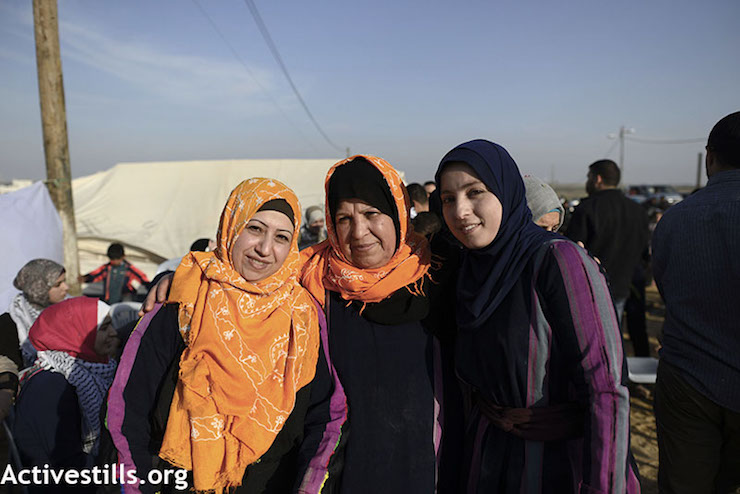This is what happens at the protest camp when the IDF isn’t shooting — and when the world isn’t looking.
Photos by Mohammed Zaanoun (Activestills.org), text by Mohammed Zaanoun and +972 Magazine Staff

On Fridays, the Gaza tent encampment near the Israeli border fence is a deadly zone. Israel snipers have opened fire on Palestinian demonstrators for two consecutive weeks, killing more than 30 people and wounding over 1,000. But during the middle of the week, the protest camp, part of the Great Return March, is something entirely different — a peaceful, colorful staging ground for a range different activities that draws entire families, located a mere 400 meters from the Israeli border.
Mohammed Zaanoun, an Activestills photographer, visited the protest camp east of Shujaiya, a neighborhood devastated by Israeli bombing during the 2014 war. Several hundred people were there to participate in the activities, from dancing and children’s games to cooking and even pop-up barbershops. At night, the women go home while some of the men remain in the tents.

Um Yousef Lubbad was evicted in 1948 from her home in Al Majdal, where the Israeli city of Ashkelon now stands. She lives in the Gaza Strip and is married with children — 15 family members in total.
“Today we came to the Return Camp to emphasize our right to return to the land the Zionists took from us,” she said. “I wish I could return to Al Majdal.”
“Today we are making Msaffan, which is made from flour, olive oil, and some special spices,” Um Yousef continued. “It is a traditional dish from Al Majdal.”


“70 members [of] our family came to the Return Camp to join our people,” Um Youssef said. “We will keep coming here to the camp till we achieve our goals and return to our land.”

The family-friendly activities, food and drink, dances and sports at protest camp have rarely appeared in reports about the Return March, which tend to focus on the violence and the dramatic images of burning tires and Israeli snipers. Reality in the protest camp is far different from what Israeli media claims it is. The protest organizers, and even Hamas, stress that this is an unarmed, popular protest against the occupation and for the Right of Return.

Roughly 70 percent of the population of Gaza are refugees — meaning they or their parents or grandparents fled or were expelled from towns, villages, and cities inside the territory that is now Israel in 1948, an event known as the Nakba. They have never been allowed to return. On clear days, across the fields near the Israeli border, they can see the the places where their homes once stood.

